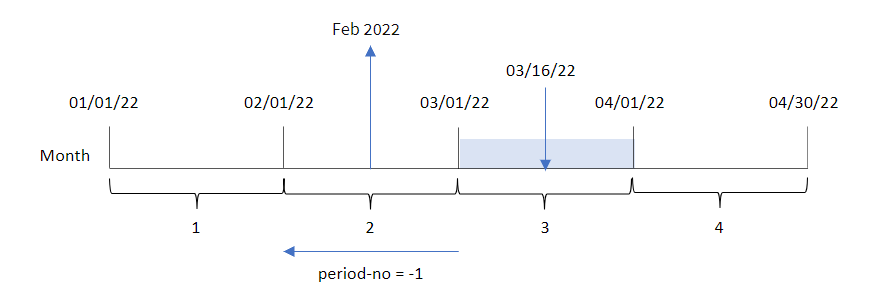This function returns a display value showing the month (formatted according to the MonthNames script variable) and year with an underlying numeric value corresponding to a timestamp of the first millisecond of the first day of the month.
Syntax:
MonthName(date[, period_no])
Return data type: dual
Diagram of monthname function

| Argument | Description |
|---|---|
| date | The date or timestamp to evaluate. |
| period_no | period_no is an integer, which, if 0 or omitted, indicates the month that contains date. Negative values in period_no indicate preceding months and positive values indicate succeeding months. |
| Example | Result |
|---|---|
| monthname('10/19/2013') | Returns Oct
2013 |
| monthname('10/19/2013', -1) | Returns Sep 2013 |
Regional settings
Unless otherwise specified, the examples in this topic use the following date format: MM/DD/YYYY. The date format is specified in the SET DateFormat statement in your data load script. The default date formatting may be different in your system, due to your regional settings and other factors. You can change the formats in the examples below to suit your requirements. Or you can change the formats in your load script to match these examples. For more information, see Modifying regional settings for apps and scripts.
Default regional settings in apps are based on the user profile. These regional format settings are not related to the language displayed in the Qlik Cloud user interface. Qlik Cloud will be displayed in the same language as the browser you are using.
If you are an app creator, you can set the default region for apps you create. For more information, see Setting your preferred regional settings for creating apps and scripts in Qlik Cloud Analytics.



